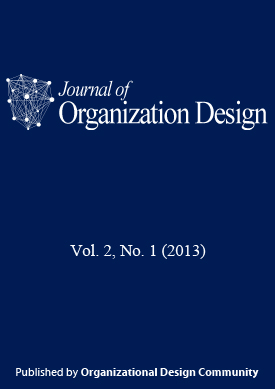Misfits in Organization Design: Information Processing as a Compensatory Mechanism
DOI:
https://doi.org/10.7146/jod.7359Keywords:
Over-fit, under-fit, misfit, fit, compensatory misfits, compensatory effect, contingency theory, information processingAbstract
We propose a compensatory misfits theory which holds that an “over-fitting” organization structure can compensate for an “under-fitting” structure, thereby reducing the total misfit. In organizations, over-fit occurs when structural features misfit the core contingencies because the structural level is too high to fit the contingencies. An under-fit occurs when structural features misfit the contingencies because the structural level is too low. When an under-fit is compensated by an over-fit, the combination can produce performance outcomes that approximate those from fit. The reason inheres in information processing being a higher level factor that cuts across different contingencies and structural features that are mis-fitted to each other, so that compensation is possible. We identify the specific conditions that must be fulfilled for compensation to occur, and we discuss implications for organization design theory and practice.
Downloads
Published
How to Cite
Issue
Section
License
JOD requires that at least one author of each accepted paper sign a Copyright Transfer Agreement form. Copyright will be transferred to Organizational Design Community when the paper has been accepted.
Articles published in JOD are licensed under a Creative Commons Attribution-NonCommercial-NoDerivs 4.0 Unported License.



